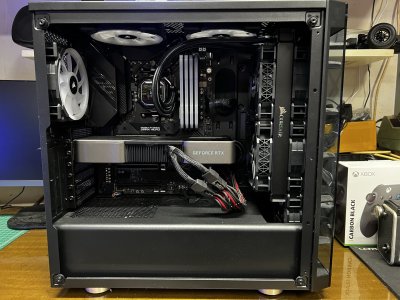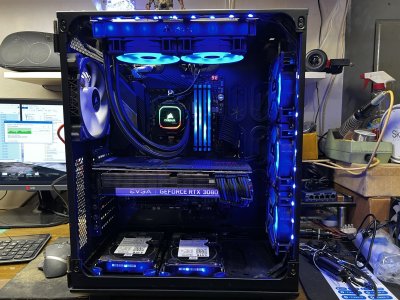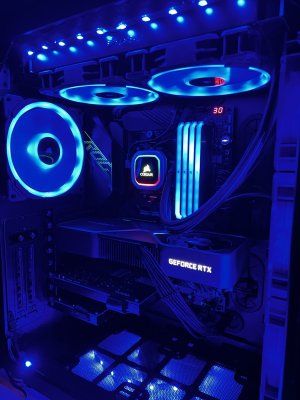I don't know the best way to set up the fans in my new Corsair H150i Elite AIO cooler, push air into the case or blow air out of my new Phanteks Enthoo Pro case. https://phanteks.com/Enthoo-Pro.html
The case front fan is 200 mm and the rear fan is 140 mm. The front, back, and bottom are all honeycombed with vent holes. The top is also honeycombed, but that's where I will be placing the Elite cooler. The bottom 4 3.5" drive bays will be filled for now, and I may add 3.5" drives to the remaining 2 free drive bays.
The AIO cooler is a new one for me. Until now I have always used air coolers for my CPU. If it matters, I also have an EVGA 3060 Ti and an ASUS ROG Strix-EA motherboard, with 1 NVMe drive installed. The Seasonic power supply blows hot air downward out of the case.
The case front fan is 200 mm and the rear fan is 140 mm. The front, back, and bottom are all honeycombed with vent holes. The top is also honeycombed, but that's where I will be placing the Elite cooler. The bottom 4 3.5" drive bays will be filled for now, and I may add 3.5" drives to the remaining 2 free drive bays.
The AIO cooler is a new one for me. Until now I have always used air coolers for my CPU. If it matters, I also have an EVGA 3060 Ti and an ASUS ROG Strix-EA motherboard, with 1 NVMe drive installed. The Seasonic power supply blows hot air downward out of the case.
![[H]ard|Forum](/styles/hardforum/xenforo/logo_dark.png)



